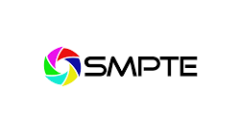WHITE PLAINS, N.Y. — Oct. 19, 2017 —
SMPTE®, the organization whose standards have supported a century of advances in entertainment technology and whose membership spans the globe, today announced that the Archive eXchange Format (AXF), published in 2014 by the Society, has been ratified by ISO/IEC and will be published officially as International Standard ISO/IEC 12034-1 in the coming weeks. An IT-centric file container that can encapsulate any number and any type of file in a fully self-contained and self-describing package, AXF supports interoperability among disparate content storage systems. The format ensures content’s long-term availability, no matter how storage or file-system technology evolves.
“ISO/IEC ratification represents a major achievement for this significant standard and for anyone looking to store, protect, and preserve valuable digital assets,” said cloudfirst.io President Brian Campanotti, a key contributor to the creation of AXF and, more recently, the leader of the ratification effort with ISO/IEC. “Formal adoption of AXF as an ISO/IEC international standard comes after a decade of work, and we believe it will play a significant role in broadening the reach of this critical standard, which already protects and preserves petabytes of the world’s most important file-based assets.”
AXF was formulated as a wrapper, or container, capable of holding in a highly resilient fashion virtually unlimited collections of files and metadata, related to one another in any combination. Known as “AXF Objects,” such containers can package, in different ways, all the specific information needed by diverse kinds of systems to access and restore the data. Because the format uses the Extensible Markup Language (XML) to define the information in a way that can be read and recovered by any modern computer system, AXF Objects are virtually immune to changes in technology and formats and apply to all legacy and future storage architectures.
AXF Objects hold files of any type and any size and are not bound by the constraints of the individual media on which they are stored. By automatically segmenting, storing on multiple media, and reassembling AXF Objects when necessary, “spanned sets” enable storage on more than one medium — and on any type or generation of media. “Collected sets” permit archive operators to version AXF Objects or files within them while preserving all earlier versions including a historical trail, even when write-once storage or expensive wide area network (WAN) connectivity is used.
“Many organizations are now looking to the cloud to help meet their long-term storage management and preservation objectives,” said S. Merrill Weiss, president of Merrill Weiss Group LLC and chair of the SMPTE Working Group on AXF. “With the cloud, AXF will play a much more important role both in enabling interoperability among today’s discrete storage systems and in ensuring future-proof access to file-based assets, regardless of the cloud or application vendor that initially created the AXF Objects.”
The nature of AXF makes it possible for equipment manufacturers and content owners to move content from their current archive systems into the AXF domain in a strategic way. AXF enables the recovery of archived content in the absence of the systems that created the archives, offering a vendor-agnostic means of protecting users’ investments into the future. By maintaining preservation information such as context, fixity, and provenance, as specified by the OAIS model, AXF further enables effective long-term protection of file-based content. Redundant AXF structures and cryptographic hash algorithms ensure the resilience and recoverability of stored data. More information can be found at OpenAXF.org, the central portal for the AXF Community.
“As part of the ISO/IEC AXF ratification process, SMPTE has been formally approved as a standards submission organization,” said Alan Lambshead, SMPTE standards vice president. “This status will assist other SMPTE Technology Committees significantly in broadening the reach of critical standards work.”
Further information about SMPTE and its standards work is available at
.
# # #
About SMPTE®
For more than a century, the people of the Society of Motion Picture and Television Engineers, or SMPTE (pronounced “simp-tee”), have sorted out the details of many significant advances in media and entertainment technology, from the introduction of “talkies” and color television to HD and UHD (4K, 8K) TV. Since its founding in 1916, SMPTE has received an Oscar® and multiple Emmy® Awards for its work in advancing moving-imagery engineering across the industry. SMPTE has developed thousands of standards, recommended practices, and engineering guidelines, more than 800 of which are currently in force today. SMPTE Time Code™ and the ubiquitous SMPTE Color Bars™ are just two examples of SMPTE’s notable work. As it enters its second century, SMPTE is shaping the next generation of standards and providing education for the industry to ensure interoperability as the industry evolves further into IT- and IP-based workflows.
SMPTE’s global membership today includes more than 7,000 members: motion-imaging executives, creatives, technologists, researchers, and students who volunteer their time and expertise to SMPTE’s standards development and educational initiatives. A partnership with the Hollywood Professional Association (HPA) connects SMPTE and its membership with the businesses and individuals who support the creation and finishing of media content. Information on joining SMPTE is available at
.
All trademarks appearing herein are the properties of their respective owners.
Link to Word Doc:
www.wallstcom.com/SMPTE/171019SMPTE.docx
Photo Link:
www.wallstcom.com/SMPTE/SMPTE_Alan-Lambshead-Standards-Vice-President.jpg
Photo Caption:
Alan Lambshead, SMPTE Standards Vice President
Photo Link:
www.wallstcom.com/SMPTE/SMPTE-Merill-Weiss.jpg
Photo Caption:
S. Merrill Weiss, President of the Merrill Weiss Group LLC and Chair of the SMPTE Working Group on AXF
Photo Link:
www.wallstcom.com/SMPTE/SMPTE_Brian-Campanotti.jpg
Photo Caption:
Brian Campanotti, cloudfirst.io President
Share it on Twitter:https://twitter.com/intent/tweet?text=ISO/IEC%20Ratifies%20@smpteconnect%20Archive%20eXchange%20Format%20(AXF)%20Standard%20-%20http://bit.ly/2yz4If3










